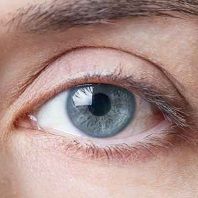Investigational Implant Halts Recurrence of Uveitis Inflammation, Improves Visual Acuity
A long-acting fluocinolone acetonide implant improved visual acuity and controlled intraocular inflammation for 2 years in 11 eyes of 11 patients with noninfectious intermediate uveitis, posterior uveitis, or panuveitis.

In uveitis patients who do not respond to, or tolerate, conventional therapy, outpatient injection of a fluocinolone acetonide (FA) implant has been proposed as an alternative treatment option. A report in the September 2016 issue of Ophthalmology describes a phase 2 study of an investigational FA implant (Medidur, pSivida Corp.). Its results indicate that Medidur may offer a safe, effective, long-acting alternative to conventional therapy in patients with several types of uveitis.
This prospective, noncomparative, investigational new drug study randomized 11 patients with a history of recurrent noninfectious intermediate uveitis, posterior uveitis, or panuveitis to receive an implant with a masked high or a low (0.18-mg) dose of FA in one eye. Fellow eyes with uveitis were treated with the standard of care, including steroid eye drops. After FA implantation, study patients were followed-up at regular intervals for 2 years.
Intraocular inflammation, use of anti-inflammatory medication, visual acuity, and safety were assessed before and after implantation.
The implant controlled intraocular inflammation in all eyes in the study. For example, although the average number of recurrences of inflammation in the 12 months before implantation was 1.5 episodes per eye, none of the 11 study eyes experienced a recurrence during the 2-year follow-up period. In contrast, 6 of the 10 eyes that were not implanted experienced recurrences of inflammation.
Among the cohort, 6 study patients continued to take systemic medication after implantation, though 4 of these patients were able to reduce their dosage during the study period.
In the 12 months before implantation, 5 study eyes received an average of 1.6 posterior sub-Tenon triamcinolone acetonide injections, but no eyes needed such an injection after implantation.
Visual acuity typically decreases over time in eyes with uveitis. However, in this study, all implanted eyes had improved visual acuity at the 2-year follow-up assessment.
After one year, the improvement in mean visual acuity from baseline was 17 letters (P = 0.041) on the Early Treatment Diabetic Retinopathy Study chart, whereas at two years, this improvement had increased to 22 letters (P = 0.016).
The most common adverse event that occurred during the study was an increase in intraocular pressure. At baseline, only 1 eye in the study required pressure-decreasing drops. However, 2 additional study eyes required these drops during follow-up. Filtering procedures were done in 2 of the eyes that needed pressure-decreasing drops.
Explantation was not required during the follow-up period, and no study patients were lost to follow-up during the investigation.
The findings prompted the study investigators to conclude that Medidur is a promising approach for uveitis patients who are nonresponsive to or intolerant of conventional therapy. Phase 2 of the study will continue for an additional year.
The study’s principle investigator, Glenn J. Jaffe, M.D., also presented the main results of a randomized, sham-controlled, double-masked, phase 3 trial of the Medidur implant (which continuously releases 0.18 mg FA for 3 years) for noninfectious posterior uveitis, a leading cause of blindness worldwide, at the American Society of Retinal Specialists Meeting on Sunday, August 14, 2016, in San Francisco.
Jaffe reported that this phase 3 trial in 129 U.S. and non-U.S. patients met its primary end-point, prevention of recurrence of inflammation at 6 months, and that this result remained highly significant (P < 0.00000001, intention-to-treat analysis) at 12 months.
Another phase 3 trial of Medidur for posterior uveitis is currently enrolling patients in India, and filing of a New Drug Application for Medidur is anticipated in 2017.